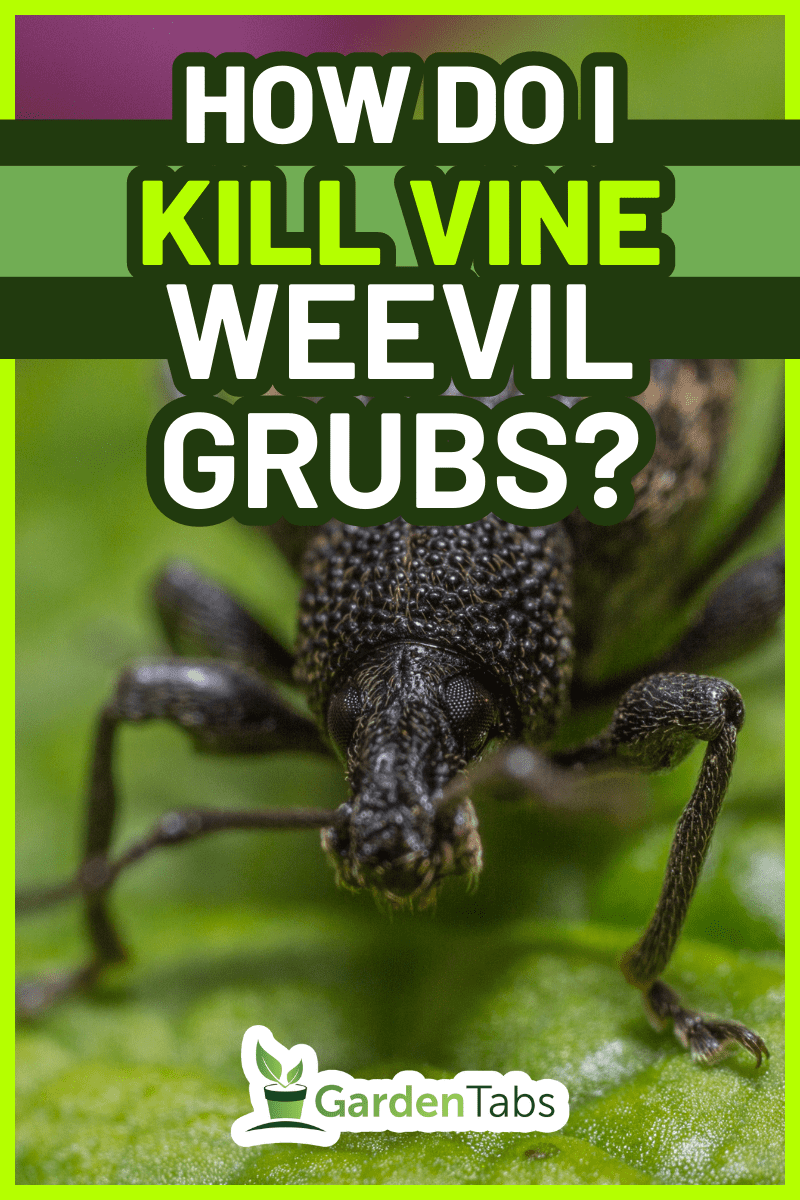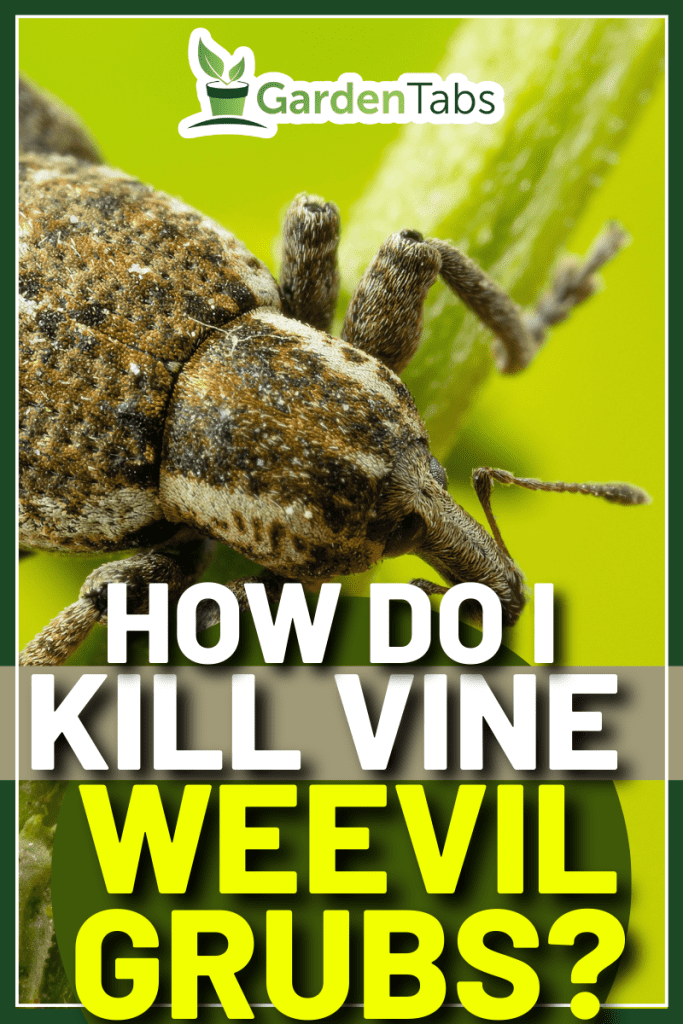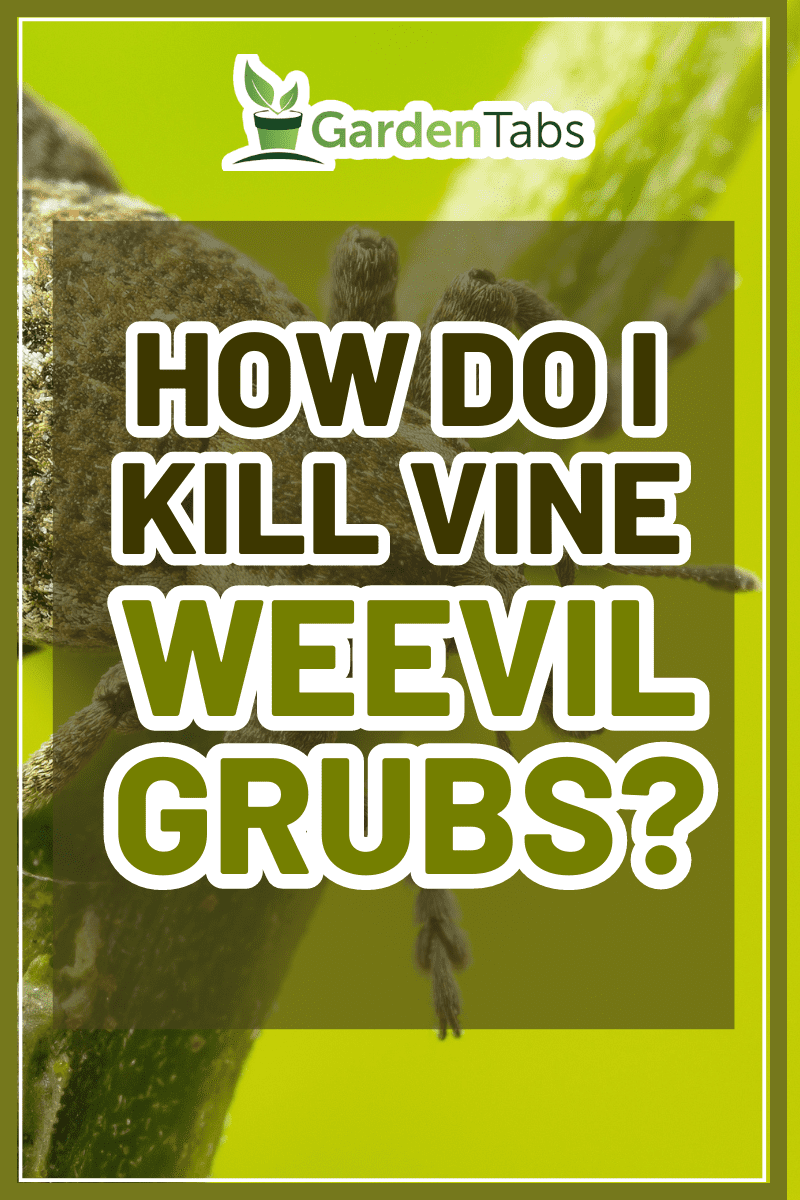Vine weevil grubs are a common pest in gardens that can cause significant damage. These small larvae feed on plant roots and can quickly multiply.
Luckily, there are several effective methods for killing vine weevil grubs. One option is to use a natural solution such as nematodes.
Another method is to use chemical pesticides, although this should be a last resort as it can harm beneficial insects and other wildlife.
Whether you're an experienced gardener or a beginner, learning how to kill vine weevil grubs is an important step in maintaining a healthy garden. Read on to learn the steps you can take to control these pests.

What Are Vine Weevil Grubs?
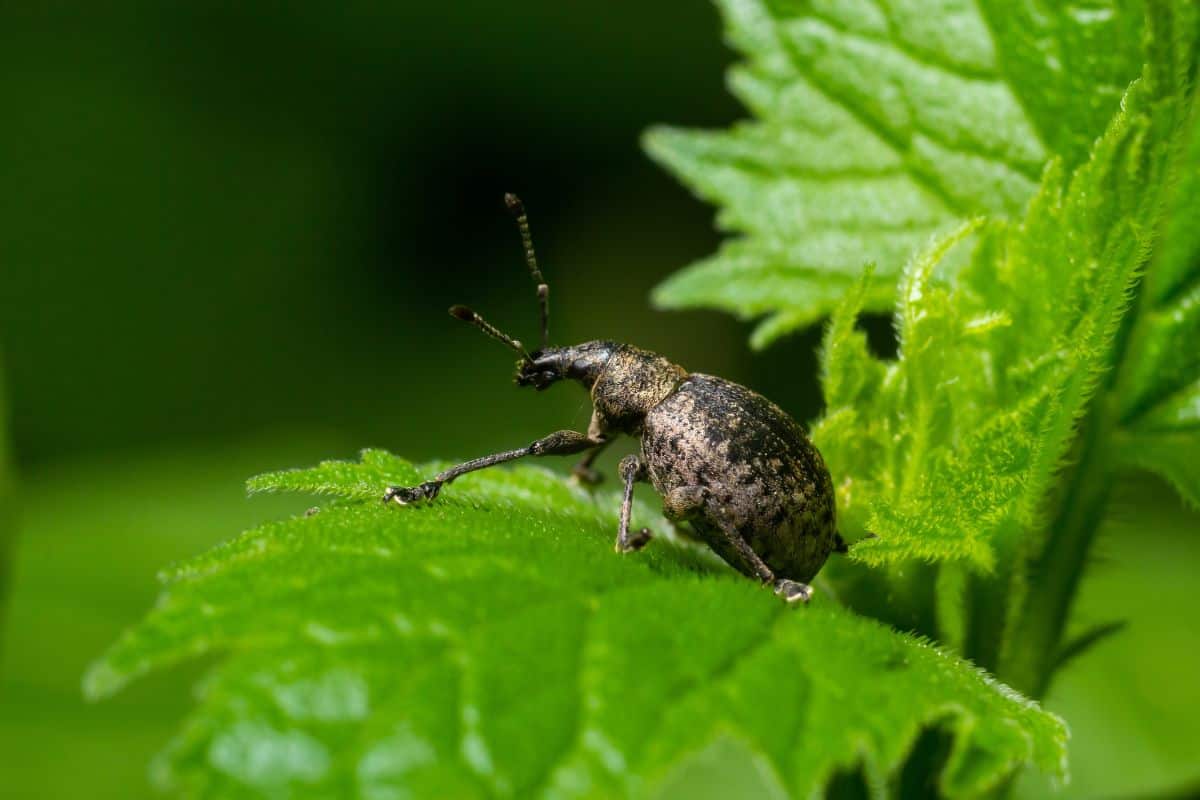
Vine weevil grubs are the larvae of black vine weevils, which are destructive pests that can cause significant plant damage.
Identifying these grubs is essential for controlling their population and preventing further damage.
The larvae are creamy-white, legless, and have a characteristic C-shaped body that is about 10mm long.
They have a brown head and six legs, which are not visible because they are located close to the head. The grubs are usually found in the soil, feeding on the roots of plants.
One way to identify vine weevil grubs is to look for damage on the plants.
The damage caused by these grubs is often confused with other plant diseases or pests. However, vine weevil grubs damage is usually more severe and can lead to plant death.
Another way to identify vine weevil grubs is to look for adult black vine weevils.
These beetles are about 10mm long, have a dull black body, and are nocturnal. They emerge in the spring and summer and feed on plant foliage.
Adult weevils lay eggs in the soil, and the larvae hatch and start feeding on plant roots.
Preventing And Killing Vine Weevil Grubs
There are multiple ways to prevent vine weevil grubs from wreaking havoc on your plants. Here are some of the best methods you can try:
Natural Control
Natural control of vine weevil grubs involves taking measures to prevent pests from infesting plants. One of the most effective ways to do this is to keep garden areas clean and tidy.
Fallen leaves and other debris should be cleared away regularly, as these can provide a habitat for adult vine weevils and their larvae.
Another method is to use physical barriers. These can be placed around the base of plants to prevent adult vine weevils from laying their eggs in the soil.
How To Prevent Vine Weevils Naturally
There are several natural methods that can be used to control vine weevil grubs.
- Remove mulch and other organic matter from the soil (weevils like moist soil.)
- Handpick the grubs off the foliage of affected plants before they start damaging them.
- Sprinkle diatomaceous earth on the soil to prevent weevil larvae from growing.
Check out this diatomaceous earth on Amazon.
It's important to note that natural methods may not be as effective as nematodes or insecticides, but they can be a good option for those who prefer to use natural methods to control pests in their garden.
Biological Control
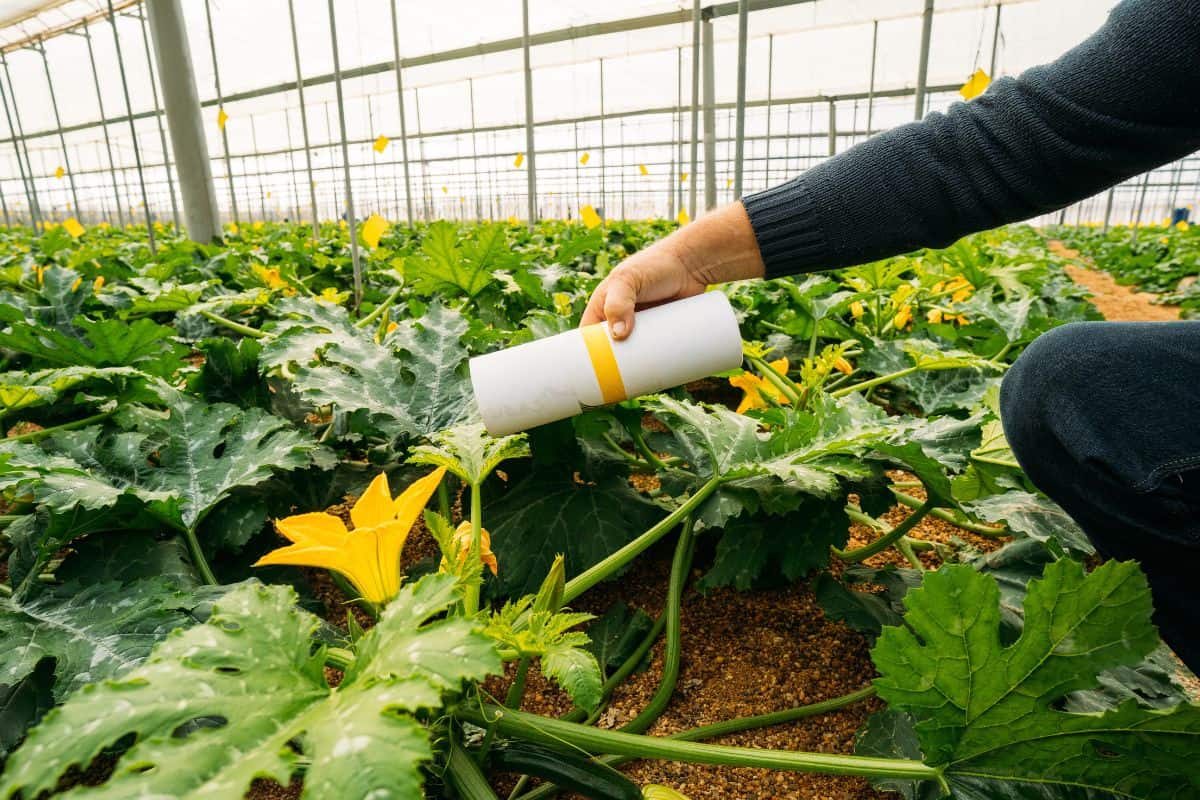
Biological control involves using natural predators and parasites to control vine weevil populations.
One of the most effective methods is to introduce nematodes into the soil. These microscopic worms are harmless to plants and humans, but they attack and kill vine weevil larvae.
It is also a good idea to encourage natural predators such as birds, toads, and ground beetles into the garden.
These animals feed on different garden parasites, including adult vine weevils and their larvae, which help keep populations under control.
Using Nematodes To Kill Vine Weevil Grubs
Nematodes are microscopic worms that can be used to control vine weevil grubs. These worms are applied to the soil, where they infect and kill the grubs.
Nematodes are a natural and effective way to control vine weevil grubs, and they do not harm beneficial insects or wildlife.
When using nematodes, it's important to follow the instructions carefully.
Get these beneficial nematodes on Amazon.
To use nematodes, you'll need to mix them with water and apply the solution to the soil around the affected plants.
They are sensitive to temperature and moisture, so it's important to apply them at the right time and under the right conditions. You also have to ensure that the soil is moist before and after application.
Chemical Control
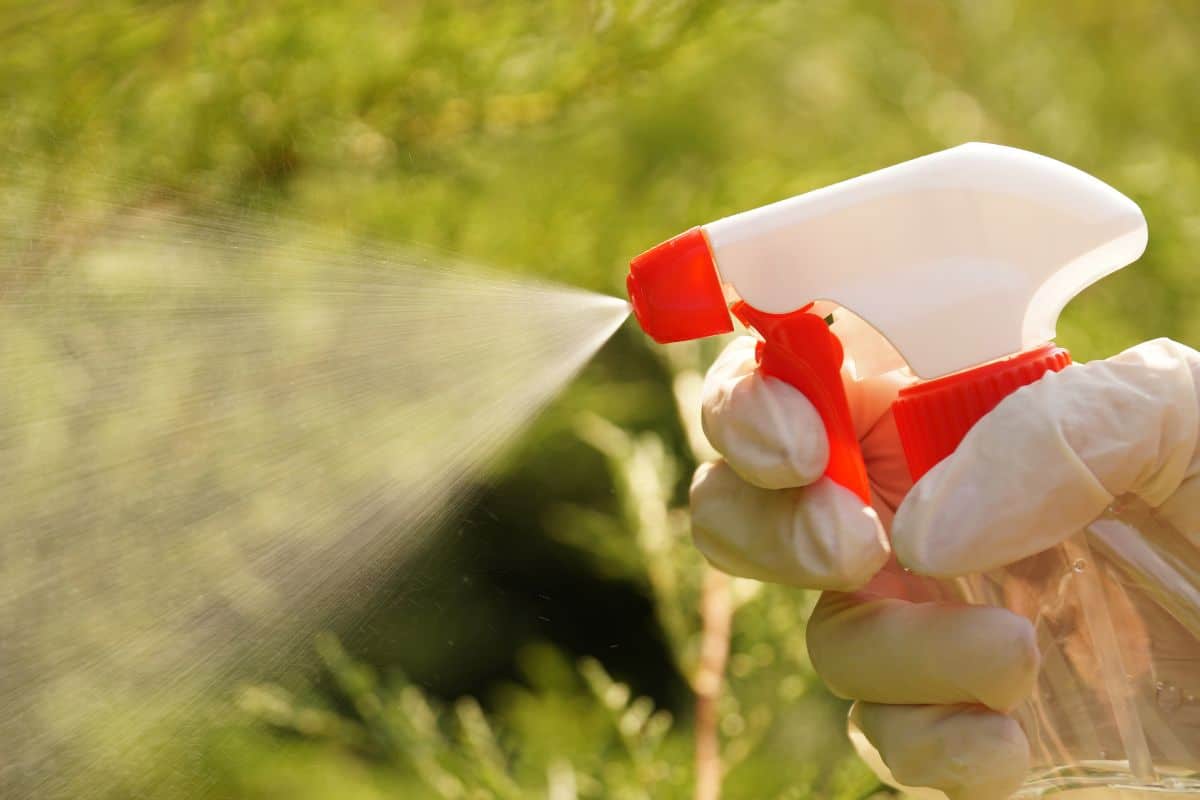
When dealing with vine weevil grubs, chemical control is an option, but it should only be used as a last resort.
Pesticides can harm beneficial insects and pollinators in the garden.
If you do need to resort to chemical control, choose a pesticide that is specifically formulated to target vine weevils and follow the instructions carefully.
Systemic pesticides are effective against both adult vine weevils and their larvae. Imidacloprid and thiacloprid are effective against vine weevil grubs.
They can be applied to the soil or foliage, but they should be used with caution.
Using too much pesticide can have long-lasting effects on the environment and can harm non-target organisms. It's important to use them sparingly and only when necessary.
Keeping Grubs Away
There are several effective ways to kill vine weevil grubs, depending on your preferences and circumstances.
As we mentioned, natural methods are effective and safe for the environment, but it takes longer to show results and require more effort and patience.
Chemical pesticides can be used, but they can be harmful, so use them sparingly.
It's a good idea to inspect plants before buying them, use sterilized soil, and avoid overwatering. These can also help prevent vine weevil infestations and reduce the need for drastic measures.
Ultimately, the best approach depends on your specific situation and goals. By combining different methods and staying vigilant, you can control vine weevil grubs and protect your plants.
Read more about preventing vine weevils:

